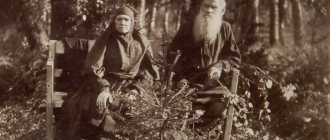It is believed that a person’s name influences his character and destiny, so people at all times have been very careful when choosing one. The science of anthroponymy deals with the study of names. Using scientific tools, scientists reveal secrets, describe character, and explain the behavior of certain people. In the article we will talk about two people who lived in different eras, but bore the same name. We will talk about Alfred the Great, King of Wessex, and Alfred Mirek, a Russian scientist, professor of theory and history of music.
King of England
We begin the story with the legendary ruler of Wessex, Alfred the Great.
This man was born in the 9th century, during the Middle Ages. He spent his childhood on the royal estate of Wanating (now Wantage, Oxfordshire). Alfred the Great was the youngest son of Aethelwulf (King of Wessex) from his first marriage to Osburga.
Even in early childhood, the future ruler became acquainted with the works of ancient writers and studied several foreign languages. At the insistence of his father, Alfred visited Rome in 853, where he met Pope Leo IV. The next trip to Rome took place in 855. Then Alfred was accompanied by his father.
As a child, the future king was in poor health, but had a tough character. From a very early age, he went hunting, strengthened himself with exercises, trying to keep up with his brothers. By the age of 20, he was considered a courageous and experienced warrior.
Partition of England
On May 5, 878, Alfred attacked the Viking camp from its weakest side and the next day took the fortifications, in the words of the Anglo-Saxon Chronicle, “... remaining lord of the place of slaughter...”. The defeated Danes took refuge in the fortress, which the Anglo-Saxons kept under siege for two weeks.
Finally, the leader of the Danes, King Guthrum of East Anglia, entered into negotiations with Alfred. According to the concluded peace, Guthrum undertook to leave Wessex and be baptized. Three weeks later he arrived to Alfred with 30 noble people. King Alfred was his godfather. Here an agreement was concluded on the division of England between the Danes and the king of Wessex.
According to the treaty, the border between Alfred's kingdom and the Viking possessions ran up the Thames and its tributary Lea through Bradford and reached the ancient Roman road, which the Anglo-Saxons called the Road of the Sons of Willow. All lands captured by the Scandinavians (East Anglia, Essex along with its destroyed capital London, all of Northumbria and the eastern half of Mercia) remained under the rule of Guthrum. Alfred got Wessex, Sussex, Kent and the west of Mercia.
The peace with Guthrum gave the Anglo-Saxons several years of respite in the depths of their island, but the Vikings, who plundered the opposite shore of the English Channel, also attacked the shores of England, hoping to take possession of the lands here. However, Alfred either prevented them from landing, or inflicted defeats, preventing them from gaining a foothold on the shore.
In 886, Alfred recaptured London, which was badly damaged by the Danes, who plundered it and almost completely burned it. Alfred rebuilt the destroyed city and made it his second residence, along with the main city of Wessex, Winchester, which remained the capital of England.
Alfred erected many new fortifications and organized a special militia in all places that could be attacked. After suffering several defeats, the Vikings stopped trying to attack Alfred's possessions.
The first years after the coronation
Alfred the Great became king after the death of Ethelred, his elder brother. This happened in 871.
In England, Alfred the Great was considered the most educated man among his contemporaries. But at the beginning of his reign this played a cruel joke on him. The fact is that Alfred the Great was able to win the people's trust thanks to his courage. Having become king, he, however, quickly lost it. Alfred did not take into account the experience and knowledge of the Witenagemot (national assembly). He strove for unlimited power and came up with various innovations that were negatively perceived by the elders.
The arrogance of King Alfred the Great, according to contemporaries, was such that he did not even deign to receive petitioners, did not listen to complainants, and did not show leniency towards the weak, considering them “nothing.” The Anglo-Saxons perceived this behavior of their ruler as an attack on their freedoms and rights.
Defeat of the Danes
The Danes captured and sacked London in 871. Then for several years they accumulated strength by engaging in petty robberies and raids. In the spring of 874, the Vikings attacked Mercia and quickly defeated its army. King Burgred of Mercia fled to the West Frankish kingdom, and the Danish protege Kelwulf II sat on the throne. Some of the Danes then moved north from Repton to the Tyne, but since there was almost nothing to plunder here, Guthrum, elected king of East Anglia by the Danes, returned with most of the army to his kingdom to give the soldiers a rest and gather reinforcements. At the same time, the Vikings began to develop the lands they had captured, build settlements and engage in agriculture. In 876, King Halfdan I of York divided up the lands in Northumbria and, according to the Anglo-Saxon Chronicle: "...they [the Vikings] took up ploughing and providing for their livelihood."
Creation of a fleet
The truce that was concluded with the Danes freed Wessex from raids for some time. However, the rest of the country found itself without the help of a ruler and was soon conquered by the Vikings. Alfred the Great used the truce to build ships.
By 875, a large fleet had been created, which inflicted several defeats on the Danes. As the Anglo-Saxon chronicle says, Alfred the Great defeated the fleet of Ubba (king of the Danes) and captured the banner, which depicted the raven of the god Odin, calling on the warriors to a victorious campaign.
The construction of ships continued. As a result, Alfred the Great created a fleet that reliably protected the kingdom from the Vikings even during the reign of Edward the Elder, his son.
Burg system
King Alfred the Great
The burgh system was intended to prevent the Danes from penetrating into the interior of the country. Ensured the convocation of the fird (militia) and the collection of taxes. About the burghs of the time of King Alfred the Great, we can say that they were of three types: royal, episcopal and burghs of ealdormen (counts). In total, thirty burghs were built during the reign of Alfred, the main reformer of the system. Construction was continued by his son Edward the Elder in Wessex, and by his son-in-law Æthelred and daughter Æthelflaed in Anglo-Saxon Mercia.
The construction and maintenance of the burgh system was equally entrusted to all the king's subjects including: ealdormen, thegns (serving and landowning nobility) and even the clergy. The latter suffered perhaps the most, the Viking invasions causing many churches and monasteries, especially along the border with Guthrum's kingdom and along the east coast of Kent, to fall into disrepair, leaving their lands desolate and devoid of labour. Therefore, Alfred actively appropriated significant parts of these strategically located lands to reward his associates and service people. Quite often, the crown forced bishops and abbots to exchange lands in order to acquire settlements that were important from a military point of view. Obviously, this kind of land transactions were not isolated and soon became a common practice of the kings of the Wessex dynasty. So, for example, Bishop Denewulf asks King Edward, “in the name of love for God and the Holy Church,” not to confiscate any more church lands in favor of the crown.
Militarily, the Burg system, as it was conceived, was oriented towards the joint actions of permanent garrisons, newly built and restored old forts with a field army, as indicated above, to suppress the predatory raids of the Scandinavians. The main source documenting the burgs as a single system is a special document, The Burghal Hidage, dating back to the 10s of the 10th century.
The rebuilt and newly erected burgs had the character of permanent urban-type settlements, and not temporary shelters. The impetus inherent in the construction made it possible to provide effective defense against Danish raids into the interior of the country, and also, under Alfred’s successors, spreading to western Mercia, the burghs largely contributed to the reconquest of the Area of Danish law.
The initial stage of the construction of the burgh system was the restoration of the defensive structures of old Roman cities. The defensive structures of Alfred's new burghs usually consisted of two ditches: an outer and an inner one, as well as an earthen rampart. The latter was on average up to 3 meters high and from 9 to 10 meters wide. Sometimes the earthen walls were additionally strengthened with peat or log lining, on which a wooden palisade was built. As for the forts that restored old Roman buildings, they first of all needed the repair of stone walls, renovation and deepening of ditches. In Winchester, for example, an impressive double ditch was dug, the remains of which, 8.2 m wide and almost 2 m deep, are still preserved.
Map of England during the time of Alfred the Great
The location of the fortresses was a real network, and covered the territory of Wessex, Sussex and Serie so that not a single important settlement was located more than 32 km (i.e. a day's walk) from any burgh, thereby providing shelter For the local population and administration, their presence represented a potential (rear) threat to enemy units. Thanks to road communications and their control, the garrisons of the burgs, if necessary, could provide each other with mutual assistance and act harmoniously with the field troops. In addition to these roads, so-called “army paths” (herepaths) were laid along the boundaries of landownership, which, as some documents indicate, were intended to quickly gather local warriors.
Ensuring the proper functioning of this system required an established and clearly coordinated management system, which is reflected in the above-mentioned Burghal Hidage monument. This text lists 29 Wessex and 2 Mercian burghs, stating the number of guides “belonging” to them. An appendix to the document establishes the relationship between the amount of hyde land and the linear dimensions of the burg: “For the maintenance and defense of one acre of wall span (4 fields or 22 yards) 16 hyde are required. If one man is posted from each guide, then each field (5.5 yards) of the wall must be occupied by four men.” Based on the known number of “belonging” to each burgh hyde, the above equation makes it possible to calculate the length of its walls and the number of people needed to protect them. In general, the agreement between the actual length of the walls of the burg and the number of guides attributed to it in the text is the same. So, for Winchester it converges almost completely: the 2400 guides “belonging” to him in The Burghal Hidage correspond to the length of the walls of 3017 m, while the actual length of the city fortifications is 3033 m.
Based on the amount of land owned by a particular estate, its owner had to provide the appropriate number of people needed to erect, maintain in order and protect part of the wall of a particular burg. As a result, the burgs could be constantly repaired if necessary and be in combat readiness. Widespread construction, as well as the economic and military-political importance that was attached to the burghs, led to the reorganization and creation of new administrative districts, the centers of which became the burghs, and, in connection with this, a partial reorganization in the military interests of the existing in Wessex county-shire systems. The legal codes of King Edward the Elder and his sons clearly show that in the 10th century the burghs finally turned into centers of strengthening royal administration.
Military reform
According to many Anglo-Saxon sources, Alfred the Great divided the country into districts, in which one soldier was posted for every five households (guide). The warrior was supplied with everything he needed by the residents themselves. The cities also provided a certain number of soldiers.
Alfred the Great reformed the previously existing system, retaining the obligation to serve for free citizens, but giving them some concessions. Thus, each soldier could spend part of his term on his own farm. In addition, some soldiers carried out garrison service in villages and cities, while others were in the active army. After a certain time they changed places. Thus, the soldiers were not away from home for long. In addition, each farmer had to participate in the maintenance of fortifications and bridges.
Alfred abandoned the people's militia. Instead, he began to form a special military class. Representatives of the Anglo-Saxon nobility and soldiers of the royal squad were exempted from working on the land. The warriors became medium and small landowners for whom the peasants worked.
Alfred's great merit is that he began to restore old and build new fortresses capable of repelling attacks from small enemy detachments.
Military transformations of the Anglo-Saxons
So, the military transformations carried out by the kings of the late Anglo-Saxon dynasty depended on the military-political lines opposed by the main external opponents. There is a certain “interface” here that separates two extremely different doctrines in the military policy of the Anglo-Saxons. The first was the result of continuous wars between the Anglo-Saxon kingdom of Wessex and its immediate geographical neighbors, such as the kingdoms of Wales and Mercia. Military campaigns conducted by the Kingdom of Wessex in the seventh and eighth centuries were carried out in relatively small detachments, often numbering no more than a thousand people, which was directly dictated by military necessity. Short military campaigns were determined by seasonal preferences and, as a rule, were limited to one general battle. The gathering of troops took place in a certain place at a pre-agreed time, all free men of the kingdom aged from 16 to 60 years old, if necessary, fell into formation, the care of weapons fell on their own shoulders.
Administrative and legislative changes
During his reign, Alfred paid great attention to public safety. To strengthen law and order in society, he elevated the royal court, placing it above other judicial authorities.
For many years the kingdom waged continuous wars. During this time, the entire legal system fell into decay: the courts no longer respected juries, nobles violated the freedoms of citizens. In an effort to rectify the situation, Alfred compiled the first set of laws. It included the most relevant and relevant regulations of the various Saxon kings.
Alfred the Great's second wind
Meanwhile, a small detachment gathered around Alfred. His people fortified the island among the swamps with an earthen rampart and palisade and began making sudden forays against the Danes. Alfred's army gradually grew. After six months of guerrilla warfare, he decided to announce his name and attack the main Danish camp. According to Asser, Alfred wanted to personally inspect the enemy's position.
Disguised as a traveling musician, he infiltrated their camp, entertaining the Danish warriors with Saxon songs. Having returned safely, he sent to all the surrounding areas to summon the Saxons to war, setting up a meeting a few miles from the Danish camp. For three days, armed men, individually and in small groups, arrived from all directions, and everyone was glad to see their king again.
Last years
At the beginning of the last decade of the 9th century. England was again attacked by the Vikings. Their goal was fertile lands in the south of the kingdom. However, Alfred and his son Edward were able not only to repel enemy attacks, but also to completely clear the English Channel of robbers.
The king devoted recent years to developing plans for an alliance of Christian powers to fight the pagan Normans. He died in Winchester, according to various sources, in 899 or 901.
The film Alfred the Great was released in 1969. Director Clive Donner tried to tell as fully as possible about the fate of this man, who was faced with the task of uniting England and repelling the Viking robbers.
Confrontation with the Vikings
In the spring of 876, Guthrum (military leader of the Viking Danes), having secured the support of the Welsh, moved with his army south. King Alfred came out with an army against Guthrum, but did not enter the battle, but offered him a ransom. He took the ransom and went to Exeter.
All winter Alfred prepared the army and navy for war with the Danes. In the early spring of 877, Wessex's army surrounded Exeter, and Alfred's fleet blocked the coast and denied the encircled Danes the opportunity to receive reinforcements. The Danes from Wargham tried to break the blockade of Exeter, but a strong storm scattered most of the Viking fleet and smashed it against the coastal cliffs. Hunger and despair forced the Danes to negotiate and capitulate. A peace was concluded in which the Danes handed over hostages, paid a ransom and swore on a sacred bracelet smeared with blood not to attack the possessions of King Alfred again. The Danes soon broke their sacred oath. Meanwhile, the reassured Alfred disbanded his army and returned to one of his estates.
Taking advantage of the fact that Alfred disbanded his army, in 878 the Danes resumed a full-scale war. King Guthrum moved south. His considerable military forces invaded Wessex from several directions, captured London and stopped on the river to spend the winter there. For Alfred and his troops this was a complete surprise. The country was paralyzed with fear. No one could provide organized resistance. The Danes marched throughout the kingdom with fire and sword, dealing with poorly organized detachments of the Saxons.
Alfred in vain sent messengers with a drawn sword and an arrow to cities and villages, calling on the people to war. Only a few responded to his call. Alfred found himself without an army, surrounded only by a small detachment of warriors loyal to him.
Under these circumstances, Alfred abandoned his warriors and his people, and fled to save his life. He found refuge on a peninsula surrounded by swamps. He baked his own bread from what the fisherman gave him in hospitality. The army of the Danes ruled his kingdom without hindrance. Almost no one knew what happened to the king.
The Saxons soon saw that the troubles of conquest were much worse than the heavy hand of Alfred that seemed to them at one time. Alfred himself, after difficult trials, became less arrogant and wiser.
Alfred Mirek: short biography
This man was born in 1922, on November 21 in Tashkent. Alfred Mirek is the founder of the Museum of Russian Harmonica. After his death, his wife Natalya Alexandrovna headed the Museum.
At the beginning of 1923, Mirek's family moved to Odessa. Here Alfred began learning to play the piano at the age of five. In 1930, the young man entered the school named after. E. F. Gnesina. In 1938, Alfred Mirek, having received the profession of an electrician, got a job in construction. In the evenings after work, he works as an accompanist.
Pedagogical activity
In 1945, Alfred Mirek began to teach himself to play the accordion. Having mastered the game, he gives solo concerts, works as an accompanist, and accompanies productions in the theater. Chernyshevsky in Borisoglebsk.
In the fall of 1946, Mirek returned to Moscow. Here he enters a pedagogical school, which he successfully graduates in 4 years. While still a student, in 1947 Alfred worked as a music school teacher and director of an accordion orchestra. In 1967, Mirek graduated from the capital's Institute of Culture. Here he studied at the button accordion department, simultaneously teaching accordion and button accordion.
New arrest
Despite the high appreciation of his scientific work, Mirek was not awarded an academic degree, because he was arrested on a fabricated case. He was accused of selling a collection of harmonicas to the Leningrad Theater at an allegedly high price. As a result, Mirek was sentenced to a year in Kresty prison.
At the end of 1986, however, the RSFSR Prosecutor's Office, by its resolution, closed the case due to the lack of corpus delicti. The damage caused to Mirek was compensated, and those responsible for his illegal arrest were severely punished. In 1987, the award of an academic degree for his doctoral dissertation finally took place.
Literary activity
Alfred Mirek is the author of twelve books, including teaching aids on music and the history of instrumentation. One of his main works is considered to be the world’s first encyclopedia on reed instruments “Harmonica. Past and present".
For many years, Adolf Mirek worked in libraries and archives in different cities of the country. It was thanks to this that he was able to create socio-political and historical works. Thus, Mirek is the author of the popular books “Prison Requiem” and “Notes of a Prisoner.” In them he talks about his time in “Kresty”, “Butyrka”, and in the Lubyanka prison.
The book “Red Mirage” brought wide fame to the author. Executioners of Great Russia." Alfred Mirek wrote it shortly before his death. It must be said that in recent years he took an anti-communist position. In the book “The Executioners of Great Russia,” Alfred Mirek describes the process of formation of Soviet power. The main task of the author is to consider and analyze the period of the birth and formation of Bolshevism in moral, human rights, economic and political aspects. Mirek talks a lot about outstanding people of that era: Trotsky, Lenin, Sverdlov, Dzerzhinsky, Frunze, Gorky, Mayakovsky, etc.
This book is written in a free, lively manner, with the humor inherent in the author. Thanks to this, the text is easily perceived by readers of any age. The focus is on the analysis of the biographies of people who lived in the Soviet era, the processes that took place during the formation of Bolshevism, the mechanisms of the formation of socialist consciousness, the strengthening and development of the repressive system, its goals, objectives, role, and the introduction of a new economic model. Mirek talks about the fates of scientists (both famous and forgotten), artists and cultural figures, diplomats, and military leaders.
Evolution of the Anglo-Saxon army
Along with the advent of the burgh system, the appearance of the Anglo-Saxon army radically changed; in fact, there was a gradual transition to a professional army. Previously, as already mentioned, all free men of the kingdom, aged from 16 to 60 years old, out of necessity, joined the ranks. Alfred and his successors realized that the peasant militia could not seriously resist the Vikings, then preference in recruiting the army passed to the Thegn class. This practice existed before, but to a much lesser extent. The main defining feature of this class was military service. The main condition for obtaining the status of ten was the possession of a land plot of at least 5 hyda. There were probably thegns who did not even have this. As mentioned above, thegns are, first of all, a military service class, but the royal courtiers were also thegns. Thegns formed the royal fyrd (king's squad) and garrisons of local burgs; as a rule, in the texts thegns appear with their personal entourage. Considering the social position of the thegns of the late period of Anglo-Saxon England, the first thing that attracts attention is the serious strengthening, compared with the previous period, of their presence in the royal council. Having emerged at the beginning of the 9th century, this trend manifested itself especially clearly towards the end of the first third of the 10th century, when the number of thegns taking part in meetings of the uitenagemot (royal council) began to noticeably exceed the number of not only clergy, but also ealdormen. For example, out of 100 whitans (councillors) of the assembly of 931, 59 were thegns, 15 ealdormen, 24 representatives of the clergy. The Uitenagemot of 932, which assembled 69 people, included 47 thegns, and of the 90 participants in the council of 934, these included 52. Having become the royal “stewards” in the burgs and centers of the shires, the thegns became a convenient instrument for conveying the decisions of the uitenagemots and the royal will to the population. For the most part, such a rapid rise in the Thegn class was ensured by the ongoing wars with the Scandinavians.
Army of Alfred the Great
Now the army, as already mentioned, consisted of two main parts, a service contingent constantly located with the king, i.e. bodyguards and palace servants (appointed, as a rule, from the thegn class) and part-time warriors in wartime (i.e. the royal fyrd). This situation is evidenced by the number of losses among the ealdormen and in the ranks of palace employees after a series of battles of Alfred the Great. Thus, 7 of the 12 ealdormen who testified to Alfred's letters before the start of Guthrum's large-scale attack on Wessex after 879 disappear forever from the lists of witnesses; the main factor here, of course, was their physical death on the battlefield. Alfred paid his military servants a constant salary, kept them fed (feasted with them) in his nomadic court. The second part were local professional militias led by ealdormen or thegns. Some of these contingents served cyclically in the burgs, the rest were on their farms and, if necessary, both of them became operational. In fact, they become a single militia of the shire.
The local fyrd consisted of all sworn free people of the kingdom, i.e. the thegns, who led their immediate circle of carls and household servants. The armament of the detachments was placed on the shoulders of the thegns. Each of these parts of the fyrd, from the royal army to the detachment of a separate thegn, could function as a separate “army”; the difference between them, ultimately, was only in size. The military contingents of the thegns were gathered, if necessary, into detachments of local and regional ealdormen. Thus, Asser, the biographer of Alfred the Great, talking about the battle of Cautisbury in 878, gives some description of them, indicating that the basis of the army of Ealdorman Odda was made up of “royal thegns with their entourage” (ministri regis cum suis). The Anglo-Saxon ealdorman, or thegn, and his entourage of the mid-9th century were quite capable of conducting military operations if necessary.
The property basis of the new, heavily armed (homini ad arms) army was the changes that took place in the land relations of the Anglo-Saxons. The main one was the significantly strengthened connection between the members of the royal fyrd and the land, which, in turn, was determined by the development of the institution of bockland. During the second stage of its existence (approximately the mid-8th - mid-9th centuries), it quickly evolved into one of the varieties of conditional land ownership. In the era of Alfred the Great and his immediate successors, this process accelerated significantly, one of the most important factors of which, undoubtedly, was the need to ensure the presence of a strong army to repel Scandinavian expansion. However, something else is much more important. During the period under study, the inheritance of grants to Bockland, which already actually existed within the framework of “ecclesiastical law” (jus ecclesiasticus), receives legal sanction, finally transforming them into purely secular possessions. Title 41 of Alfred's Law tells about the order of inheritance of Bockland (by the way, it was in this law book that the term itself was mentioned for the first time). The entire context of the article convinces us that the award is quite freely inherited. The only limitation imposed by the title being analyzed was that Bockland could not be alienated outside the clan if it was left to the heir by his blood relatives and, moreover, if there was a special document (apparently a charter) prohibiting such alienation.











